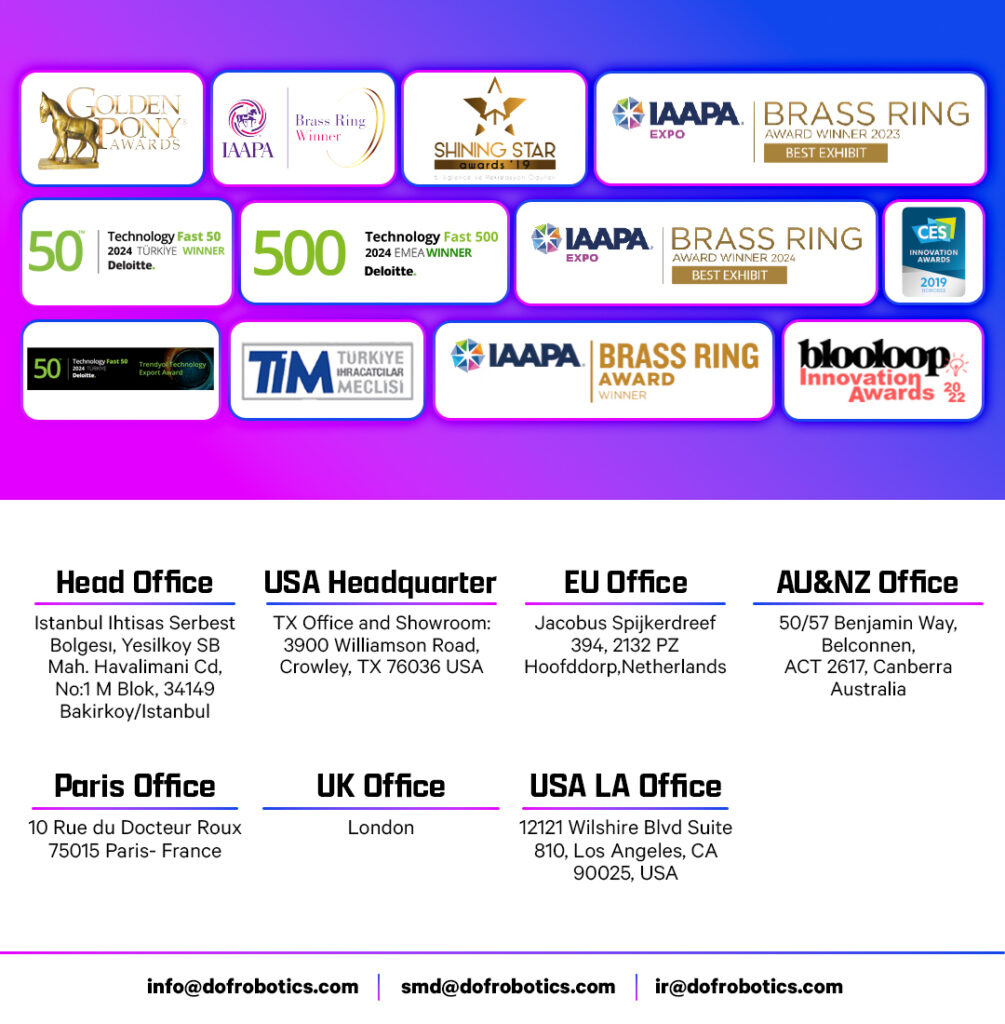The Role of Storytelling in Flying Theater VR
Experiences
The Role of Storytelling in Flying Theater VR Experiences
Virtual reality (VR) technology has swept through a host of entertainment industries, providing immersive experiences that are frankly extraordinary. Amid this evolution, the work of simulator ride manufacturers like DOF Robotics has transformed one particular art form we’re all familiar with: the art of flying theaters. In its simplest sense, flying theaters infuse the physical sensations of flight simulation with carefully designed virtual environments to create a seamless narrative experience unlike any other — an experience that can leave an emotional impression on an audience and blend the excitement of a theme park attraction with the narrative power of film in ways that were never impossible before.
In the age of flying theater VR experiences, the art of storytelling sets one attraction apart from another, and it becomes one of the most essential ingredients in making a flying theater the cultural phenomenon and blockbuster timing it becomes. In this context, here’s an exploration of storytelling’s role in flying theater VR experiences and why what you’ll see below is so central to the attraction’s success.
The Attraction Of Storytelling: The Thrill Of Immersive Entertainment
Flying theaters debuted in the entertainment center and theme park industry by creating attractions for destination play — and they, too, have always done this by telling a story. One need only cue up to a ride — one that’s fabricated, constructed right in front of you in a unremarkable line, because a part of you has known for at least a few minutes now that the line is just a part of the mass narrative, a uniquely-themed waiting room, that is, before you get a seat — to see this in action.
The neat comparison is product design, another industry that offers virtual versions of real experiences. Just there, those virtual versions appear in the form of digital CADs, leading to iterative models, but never to the real thing. Here, by contrast, the journey to that ‘real thing’ the narrative enables blurs by in just the time it takes to say, “Pass the announcer … is that a DC-10? … huh, that’s a sheet with “El Capitán” on it …$2 for a coffee here?” … and so on. Until finally, you’ve ‘arrived.’
While guests may put on the virtual reality (VR) that a virtual reality game development company is providing and be seated and strapped in, they are not seeking a thrill as much as they are a story. One that will take them on a journey to a far-off place. Whether soaring high above mythical lands or taking a deep sea dive to the darkest depths, the story brings to life the visuals and the sensory feedback that the VR gear provides giving necessary context and every sensation and emotion that they lead to. The story is the heart of the experience.
The Perfect Story for a Flying Theater Experience
To create the perfect story for a flying theater experience, ride developers and content creators must consider a multitude of things, most imperatively how the narrative meshes with the motion of the simulator, the virtual environments that the installation generates, and the overall theme of the attraction. It’s a delicate ballet between the technical trades of companies like DOF Robotics and those that are storytellers in every sense.
Characters and Plotlines In any story, characters are a useful surrogate for the audience —someone to root for or against —while plotlines provide context that frames your journey. In a flying theater experience, characters might be fantastical creatures or intrepid explorers who guide you on your adventure. Plotlines could revolve around a discovery or quest, with the ride’s motion simulating the perils and triumphs you’d encounter. 0.57 Emotional Engagement Storytelling and emotions are two sides of the same coin. After all, you’re meant to feel something. A swooping view of a city skyline at night should be breathtaking in all the right ways. Narrowly avoiding a hurricane should feel urgent, and exhilarating. Stories also have to be paced to draw the viewer in and dole out the emotional returns on the user’s investment at just the right moments in conjuncture with our simulator’s physical cues. 1.14 Cultural and Thematic Elements Just as important is how cultural and thematic elements help create a three-dimensional space between that narrative and the viewer. A tale set in an ancient civilization, for example, could be flavored by the myths and legends of the era. These sorts of things and their ancillary elements help flesh out the story being told and give it a layer of authenticity and engagement that can’t be overstated. 1.49
The Technology Behind the Magic
While storytelling is the soul of the experience, the technology provided by flying theater manufacturers is the body that allows these stories to come to life. DOF Robotics and companies like it have, in essence, become simulator ride specialists, creating sophisticated systems capable of replicating the subtlest of aeronautical nuances.
The Simulator Ride
A simulator ride is a physical platform that moves in sync with the visual content, providing the kinetic feedback that allows the story to feel real. Sophisticated robotics and motion-based platforms are programmed to tilt, shake, and soar, mimicking the twists and turns of the narrative. Without this precise synchronization, the illusion would be broken, and the story’s impact, diminished.






